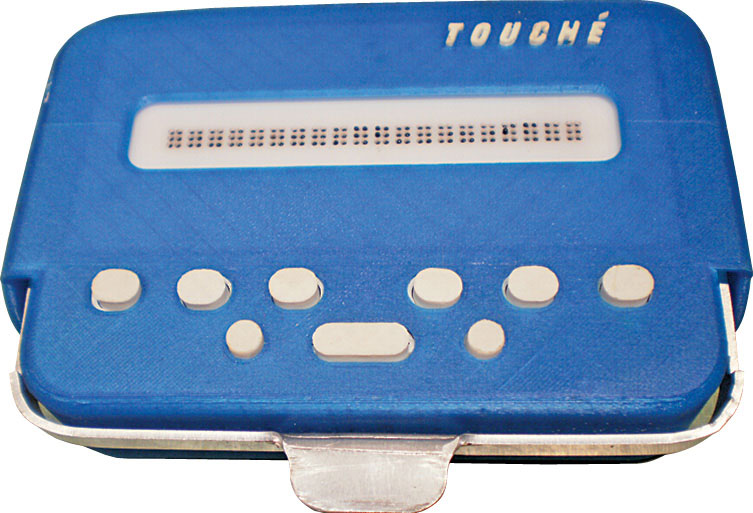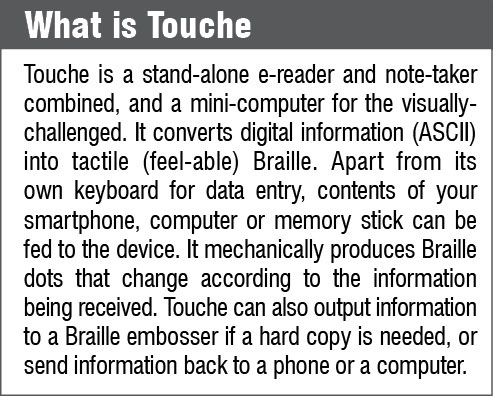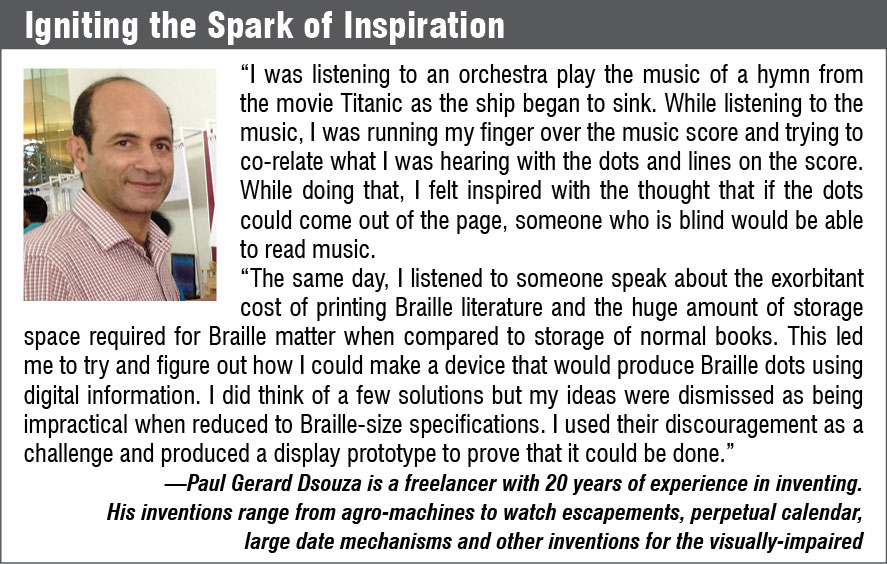The world is becoming digital. We wake up every morning on seeing the time on our clock/watch. We turn on the television or e-readers and catch up on news. We leave for work, go to the station and the display tells us how long before the train arrives. At office, we spend most of the day working on our laptop. Let us not forget that the whole day we have a companion with us, the smartphone. Imagine if, just for a day, you had to stay digital-less.

“No WhatsApp! No browsing! No e-books!” Just reading this, I am sure, must have given you the creeps. We do not even give a second thought to these tasks that have become a way of life today. But there are people out there who need someone to read the digital data out loud; they need special books printed for them to read content that is always outdated and a scribe for every examination.
The question that prompted it all
 Is there any way to make their life easier, to make them technology-enabled? Those in the know might say that there are devices that do the job. Yes, there are and these are made by foreign companies using German or Japanese technology, or by Indian companies that borrow their technology. No wonder then that the already over-burdened visually-challenged find the US$ 2000 per line Braille converters unaffordable. Can we find an alternative to this? This is the question Paul Gerard D’Souza, a freelancer who invents new technologies and devices, set out to answer.
Is there any way to make their life easier, to make them technology-enabled? Those in the know might say that there are devices that do the job. Yes, there are and these are made by foreign companies using German or Japanese technology, or by Indian companies that borrow their technology. No wonder then that the already over-burdened visually-challenged find the US$ 2000 per line Braille converters unaffordable. Can we find an alternative to this? This is the question Paul Gerard D’Souza, a freelancer who invents new technologies and devices, set out to answer.
We know the problem, what do we do
We need a device that can take in digital text and convert it to Braille. The first part is easy—use a computer or smartphone to type out the content. Transfer this data to the device via Bluetooth, USB or a pendrive and throw in some memory to store it. D’souza used customised software to convert this digital text into signals, and a processor to control this.
Let us now take a look at the other side. The display demands a tactile surface on which small projections are made to appear and recede, giving the user the Braille reading interface.
Braille display matrix has fixed dimensions, and different dot combinations represent different letters. The scale cannot be changed. Braille dots are spaced 2.5mm apart within a cell, and cell-to-cell pitch is about 6.25mm.
D’Souza needed to create a mechanical system that would drive the pins according to the data and, for this, he used actuators. Electronic signals drive the actuators, each of which drives a pin on Braille display. Sounds simple, but try to implement it and the complications begin.

First and foremost, the display has to show enough data for a person to read. Touche has a 20-character display, with each character comprising dots or pins arranged in three rows of two columns each; this means fitting in 120 actuators within one line. When the reader feels the data, pins have to withstand a pressure of 15 to 20 grams.
Small solenoids and motors cannot bear this pressure, others are too big, consume huge current, or are too costly. D’Souza came up with the idea of using appropriately-positioned micro-motors, the ones used as vibrators in mobile phones that cost around Rs. 15 each.
But with these being about 4mm in diameter, size and stability became serious issues. The trick was to use these only to indicate logical states and distribute and stack these in other available free space. To shift the selection from the motors to the pins on the display, he used a system of connecting levers. To refresh data and load in the next set, he designed a system of mass lifting.




